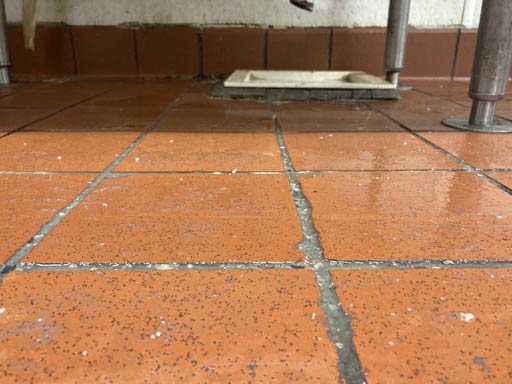When you think of epoxy grout, it often symbolizes durability and strength, promising to hold up against wear and tear. However, have you ever wondered if it could crack under pressure? The potential for epoxy grout to develop cracks raises questions about its reliability and longevity. Understanding the factors that contribute to epoxy grout cracking is essential for anyone looking to ensure the longevity of their tiled surfaces. Also Read Manufacturers of Tile Adhesive, Wall Putty & Epoxy Grout
Common Causes of Epoxy Grout Cracks
- Epoxy grout cracks can be caused by various factors, ranging from improper installation techniques to environmental conditions. When it comes to waterproofing techniques, inadequate preparation of the substrate before grouting can lead to moisture seepage, causing the epoxy grout to crack over time. It’s crucial to ensure that the surface is clean, dry, and free of any contaminants before applying the epoxy grout to prevent such issues.
- Expansion joints also play a significant role in the longevity of epoxy grout. Without proper expansion joints to accommodate the natural movement of building materials due to temperature changes or settling, the epoxy grout can become stressed and crack as a result. Ensuring that expansion joints are correctly placed and adequately filled with a flexible material can help mitigate the risk of cracks forming in the epoxy grout.
How to Prevent Epoxy Grout Cracking
- To prevent cracking in epoxy grout, meticulous attention to preparing the substrate for grouting is essential. Start by ensuring a clean, dry, and contaminant-free surface. Any moisture or debris left on the substrate can compromise the bond and lead to cracks over time. Properly cleaning and drying the surface before application is crucial for maximizing grout longevity.
- When applying epoxy grout, make sure to follow the recommended grout application techniques. Use the appropriate tools and equipment to achieve a consistent and even application. Pay close attention to mixing ratios and application instructions provided by the manufacturer. Applying the epoxy grout correctly helps ensure a strong and durable bond, reducing the risk of cracking in the future.

Signs of Cracked Epoxy Grout
- Inspecting the tile joints for any fine hairline fractures can indicate the presence of cracked epoxy grout. These fractures may start small but can gradually worsen over time, leading to more significant issues if left unaddressed. Another warning sign of cracked epoxy grout is the presence of water seepage or discoloration around the tiles, which may indicate a breach in the grout’s integrity. Pay attention to any areas where the grout appears to be crumbling or missing, as this could be a clear indicator of cracks.
- To prevent epoxy grout from cracking, ensure that proper installation techniques are followed, including mixing the grout correctly and applying it evenly. Additionally, using a sealant can help protect the grout from moisture infiltration, reducing the likelihood of cracking. Regular maintenance, such as resealing the grout as needed, can also help prolong its lifespan and prevent cracks from forming. By staying vigilant for these warning signs and implementing preventive measures, you can help keep your epoxy grout in top condition.
Repairing Cracked Epoxy Grout
- When addressing cracked epoxy grout, the initial step involves carefully assessing the extent of the damage to determine the most effective repair method. If the cracks are small, a DIY repair can be attempted using an epoxy grout repair kit. These kits typically include all the necessary materials and detailed instructions for a successful repair. Begin by cleaning the cracked area thoroughly, removing any debris or loose grout. Follow the kit instructions to mix and apply the epoxy grout carefully into the cracks, ensuring a smooth and level finish.
- For larger or more severe cracks in epoxy grout, it may be best to seek professional help. Professional tile installers or contractors have the expertise and tools to handle extensive repairs effectively. They can assess the damage accurately and recommend the most suitable repair techniques, ensuring a long-lasting solution. Additionally, professionals can match the color and texture of the existing grout seamlessly, providing a flawless finish that blends in with the surrounding tiles.
Maintenance Tips for Epoxy Grout
Wondering how to effectively maintain your epoxy grout for long-lasting durability and appearance? Keeping your epoxy grout looking pristine involves adopting the right cleaning techniques and being mindful of color options.
- When it comes to cleaning, using a pH-neutral cleaner is crucial to prevent discoloration or damage to the grout. Avoid harsh chemicals like bleach that can deteriorate the epoxy over time. Regularly wiping down the grout lines with a soft cloth or sponge can help prevent dirt and grime buildup, preserving the grout’s integrity. Additionally, for tougher stains, a mixture of baking soda and water can be gently scrubbed onto the grout lines for effective cleaning without causing harm.
- Color options for epoxy grout are vast, offering a wide range of choices to suit any design aesthetic. Whether you prefer classic neutrals or bold hues, epoxy grout can be customized to complement your space perfectly. Remember to select a color that not only enhances your tiles but also aligns with your maintenance preferences, as darker shades may require more frequent cleaning to maintain their appearance.
Conclusion
In conclusion, while epoxy grout is known for its durability and resistance to cracking, it isn’t entirely immune to damage. By understanding the common causes of epoxy grout cracks, taking preventive measures, and promptly addressing any signs of cracking, you can prolong the lifespan of your grout. Regular maintenance and repairs will ensure that your epoxy grout remains strong and intact for years to come.

